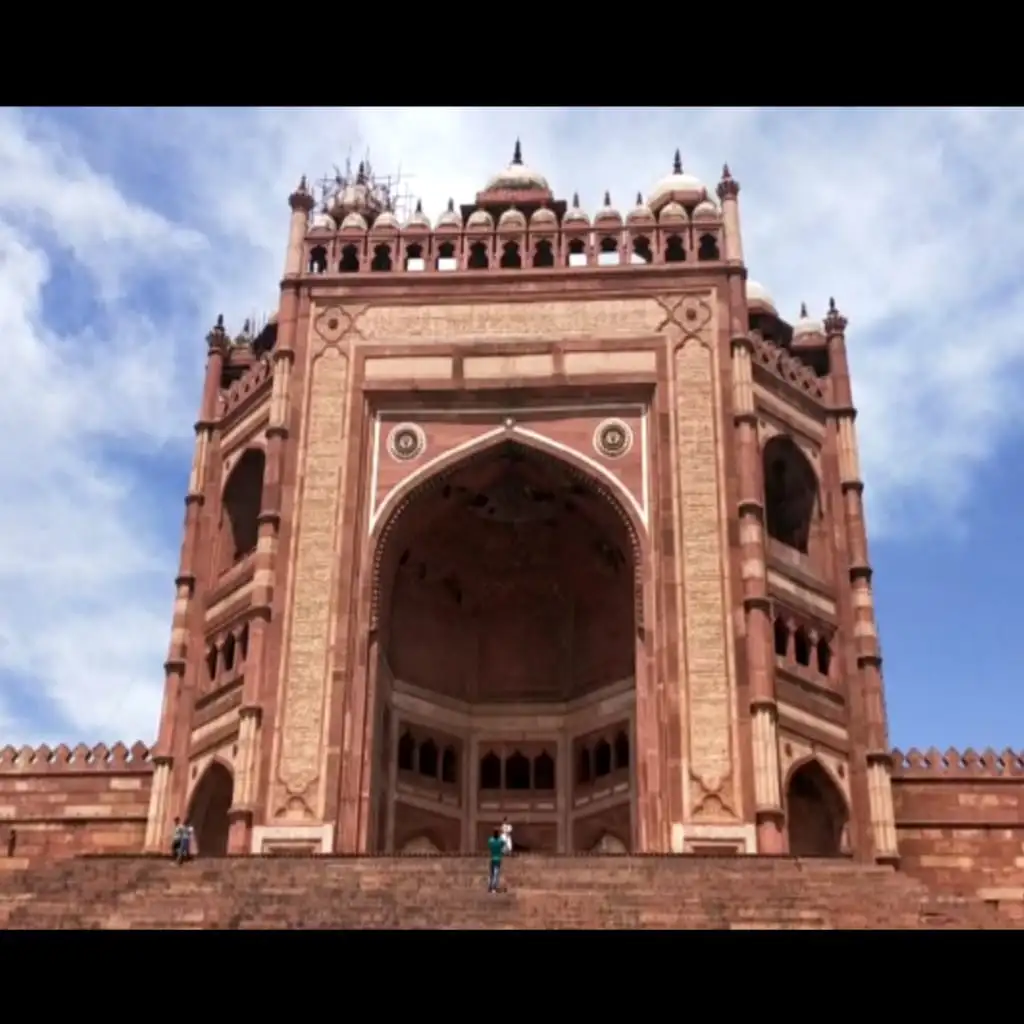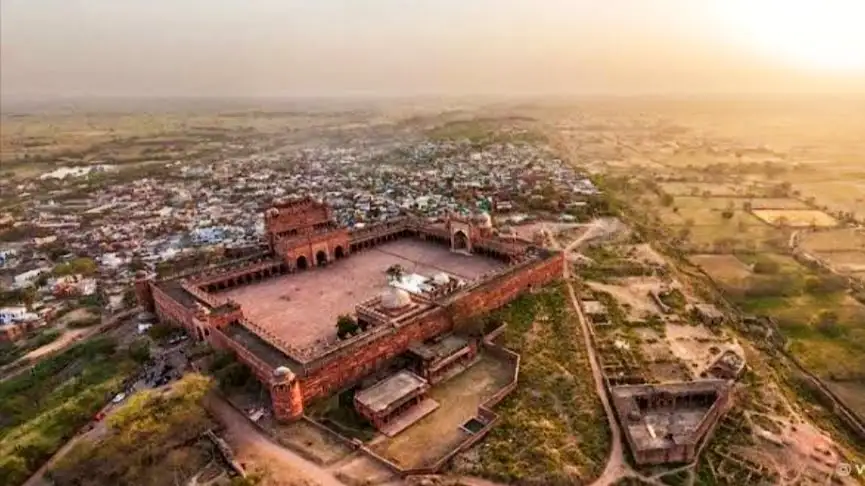Fatehpur Sikri, a UNESCO World Heritage site, is renowned for its blend of Mughal architecture and rich history. Founded by Emperor Akbar, this city served as the capital of the Mughal Empire for nearly 15 years. Fatehpur Sikri boasts of many majestic structures that highlight the grandeur of the Mughal era. In this blog, we explore the top attractions that make Fatehpur Sikri a must-visit destination.
1. Tomb of Hazrat Sheikh Salim Chishti, Fatehpur Sikri
The Mausoleum of Hazrat Sheikh Salim Chishti is a sacred site within the courtyard of Fatehpur Sikri. This magnificent marble structure was built to honor the Sufi saint who blessed Emperor Akbar with a son, Jahangir. Known for its intricate craftsmanship, the tomb is a fine example of Mughal architecture. Visitors from all around the world come here to seek blessings and admire the serene beauty of the mausoleum.

2. Buland Darwaza, Fatehpur Sikri
Buland Darwaza or the “Gate of Magnificence” is one of the most iconic structures of Fatehpur Sikri. Standing 54 meters tall, it is the highest gateway in the world, built by Emperor Akbar to commemorate his victory over Gujarat. The towering gate, adorned with inscriptions and stunning artistry, is a symbol of Akbar’s might and architectural prowess. A visit to Fatehpur Sikri is incomplete without marveling at this grand entrance.
3. Diwan-i-Aam, Royal Palace, Fatehpur Sikri
The Diwan-i-Aam or “Hall of Public Audience” was where Emperor Akbar addressed the public and listened to their grievances. This open-air structure, located within the Royal Palace complex, was designed to accommodate large gatherings. The hall reflects the simplicity of Mughal architecture, with an emphasis on open space, symmetry, and accessibility.
4. Diwan-i-Khas, Royal Palace, Fatehpur Sikri
The Diwan-i-Khas, or “Hall of Private Audience,” is an extraordinary structure within the Royal Palace of Fatehpur Sikri. Unlike the Diwan-i-Aam, this hall was used for private meetings with important dignitaries and guests. Its standout feature is the central pillar with a uniquely designed platform, symbolizing the convergence of Akbar’s diverse philosophies.
5. Panch Mahal, Royal Palace, Fatehpur Sikri
One of the most distinctive structures in the Royal Palace is the Panch Mahal, a five-story palace designed for relaxation. The building, with its open terraces and numerous pillars, provided Emperor Akbar and his family a place to enjoy cool breezes and the scenic view of the surrounding landscape. The unique design of Panch Mahal showcases the fusion of Persian and Indian architectural styles.
6. Tansen Seat, Royal Palace, Fatehpur Sikri
The Tansen Seat is an intriguing site located within the Royal Palace complex. Named after the legendary musician Tansen, one of Akbar’s Navaratnas, this location is believed to have been a performance space for music and poetry recitals. The acoustics of the structure are said to have been exceptional, adding to the significance of this historical spot.
7. King Akbar’s Khwabgah, Fatehpur Sikri
Khwabgah translates to the “House of Dreams,” and it was here that Emperor Akbar retired after a long day of royal duties. The Khwabgah at Fatehpur Sikri is a spacious and richly decorated private chamber, complete with intricate carvings and royal furnishings. It was in this palace that Akbar is said to have envisioned many of his plans for the empire.
8. Jodha Bai Mahal, Fatehpur Sikri
The Jodha Bai Mahal was the residence of Akbar’s chief consort, Jodha Bai. This palace combines Mughal and Rajput architectural styles, symbolizing the cultural fusion between Akbar’s empire and Jodha Bai’s Rajput heritage. The palace is notable for its spacious courtyards and intricate stonework, reflecting the luxurious lifestyle of the Mughal royals.
Conclusion
Fatehpur Sikri is a treasure trove of historical and architectural wonders. From the spiritual aura of Hazrat Sheikh Salim Chishti’s Tomb to the grandeur of the Buland Darwaza and the royal elegance of Jodha Bai Mahal, each monument in Fatehpur Sikri tells a story of the Mughal Empire’s legacy. Whether you’re a history enthusiast or an architecture lover, these monuments offer a glimpse into the rich cultural heritage of India.

